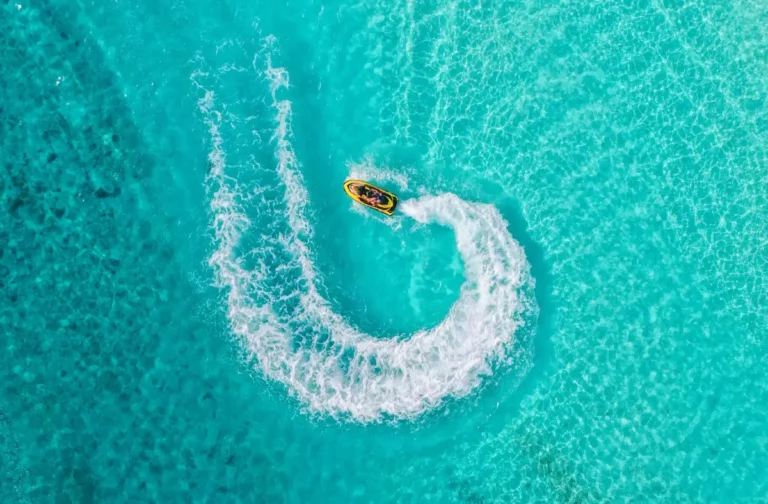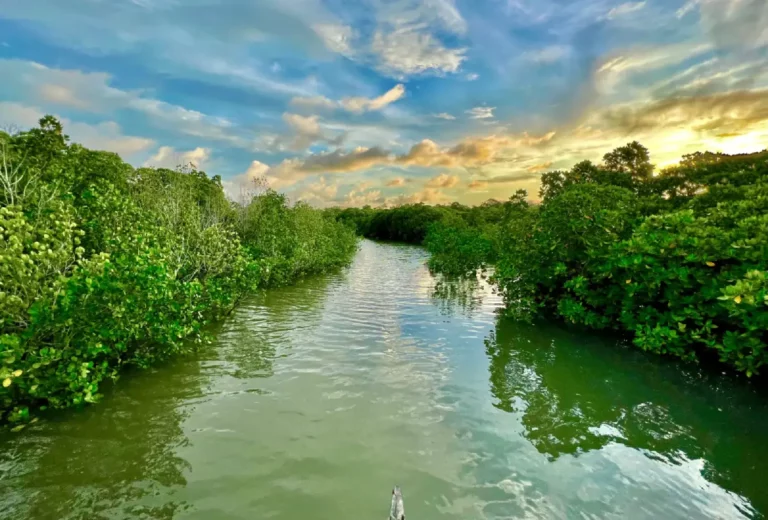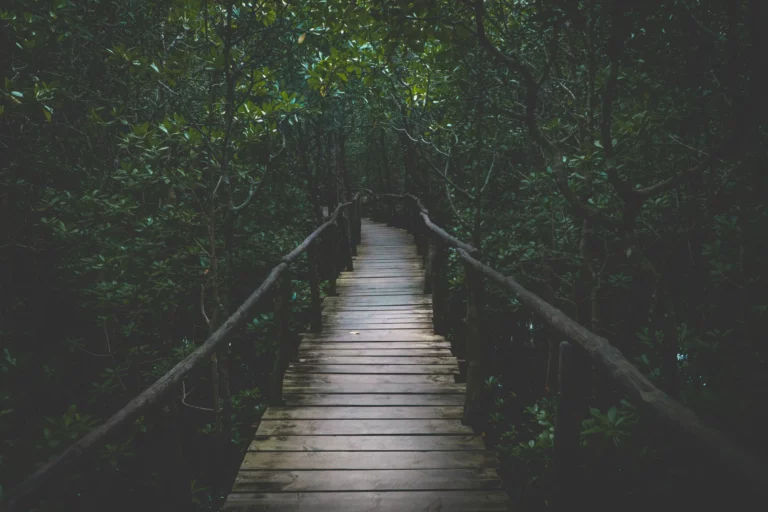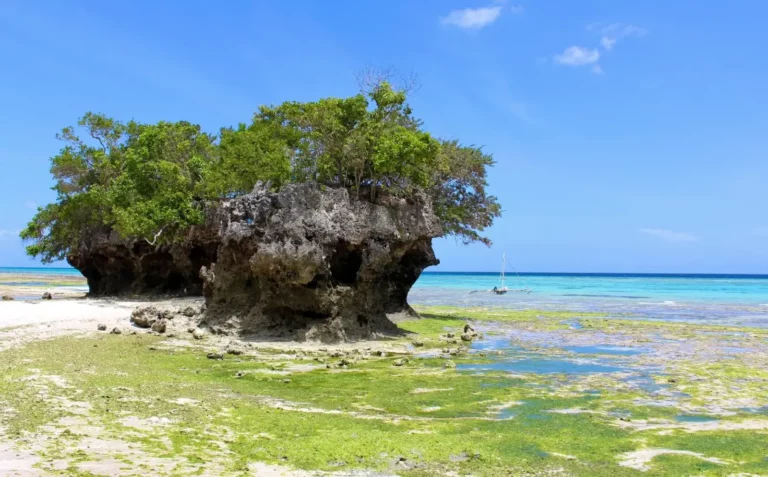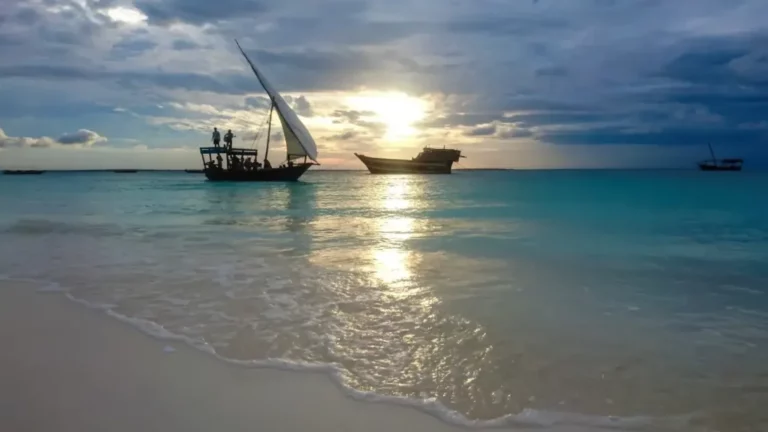Swimming with Dolphins in Kizimkazi: A Responsible Guide to Zanzibar’s Most Popular Marine Experience
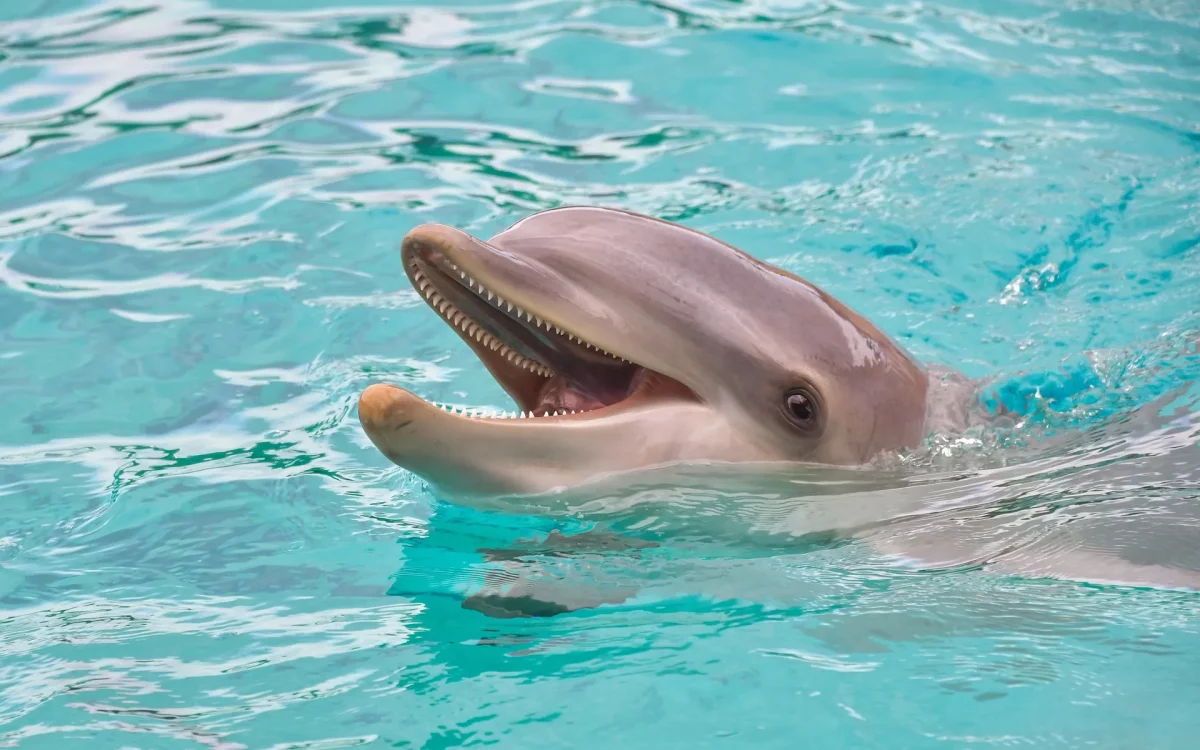
Few adventures in Zanzibar capture the imagination quite like swimming with dolphins in Kizimkazi. Tucked away on the island’s serene southern tip, this once-sleepy fishing village has quietly transformed into the heart of Zanzibar’s dolphin tourism. What sets Kizimkazi apart isn’t just the setting—though the coral-fringed coastline and calm turquoise waters are stunning—it’s the rare presence of year-round resident dolphins that makes it so exceptional. Both Indo-Pacific bottlenose and Indian Ocean humpback dolphins patrol these waters daily, often within a few hundred meters of shore, offering one of the most consistent marine wildlife-watching experiences in East Africa.
Its location, just over an hour’s drive from Stone Town, adds to the appeal. Travelers can leave early in the morning and be cruising alongside dolphins by sunrise. No long boat rides, no uncertain wildlife migrations—just the open sea, a local guide, and the chance to glimpse marine mammals in their natural habitat.
But there’s more to the story than meets the eye. Over the past twenty years, tourism has reshaped Kizimkazi. What began as a modest alternative to fishing has evolved into a major economic lifeline. Dolphin tours now support dozens of local livelihoods, from boat captains to hotel staff. Yet with that growth has come new pressure: crowded tours, environmental stress, and concerns about the long-term impact on the animals themselves.
Today, Kizimkazi stands at a crossroads. It’s a place where unforgettable wildlife encounters meet the hard realities of conservation and community development. For travelers, that means taking a deeper look—not just at the animals, but at the way we interact with them. Understanding the balance between access and protection is what turns a typical tour into something more meaningful: a responsible, respectful, and truly rewarding experience.
How Kizimkazi Became the Dolphin Capital of Zanzibar

Roughly an hour’s drive from Stone Town, Kizimkazi offers a very different slice of Zanzibar—less polished, more local, and uniquely connected to the sea. While most visitors flock to the island’s eastern beaches for their white sand and resorts, Kizimkazi’s allure lies in its geography. The coastline here is edged by submerged coral shelves and dramatic underwater drop-offs. These natural features create ideal conditions for dolphins, who prefer deeper water but still venture close to shore to hunt, play, and socialize.
This rare underwater landscape means you don’t have to travel far to see dolphins in Kizimkazi. In fact, pods are often found just a few hundred meters offshore—well within reach of a small boat and a short morning tour. That proximity is what makes dolphin-watching here so reliable. Unlike destinations that depend on seasonal migrations or offshore excursions, Kizimkazi’s dolphins are residents. They’re here every day, year-round.
The village is best known for two species: the Indo-Pacific bottlenose dolphin and the Indian Ocean humpback dolphin. Bottlenose dolphins are the main draw for most tours—they’re larger, highly social, and tend to swim in bigger pods that are easy to spot. They’re also more curious about boats and occasionally swim near snorkelers, though always on their own terms. Humpback dolphins, on the other hand, are more reserved. They travel in smaller groups, keep their distance, and are harder to find, but their shy, elusive nature adds a layer of mystery when they do appear.
Thanks to the resident population, sightings are possible throughout the year. However, the best time to visit is during Zanzibar’s dry seasons: June to October and December to February. During these months, the water is calmer, visibility improves, and the overall experience—whether from the boat or in the water—is smoother, safer, and far more rewarding.
What to Expect on a Dolphin Tour in Kizimkazi
Most tours in Kizimkazi begin very early in the morning, usually between 6:00 and 8:00 AM. This timing coincides with the dolphins’ most active period and avoids the harsher midday sun and choppier waters.
Visitors typically board small motorboats operated by local guides, often carrying 6–8 passengers. The excursions last between 1.5 to 3 hours, depending on weather, sightings, and group preferences. Tour operators usually offer two types of experiences:
- Dolphin watching from the boat
- Swimming or snorkeling with dolphins when the animals are calm and the water is safe
While tour guides often claim a “95% success rate” in spotting dolphins, actual experiences can vary significantly. Pods can be elusive, especially during the rainy season, and the swimming experience depends heavily on both sea conditions and the dolphins’ behavior.
Meet the Dolphins of Kizimkazi

Kizimkazi’s waters are home to two species that make this stretch of coastline one of the best places in East Africa for marine wildlife encounters. Unlike migratory species that come and go with the seasons, these dolphins are year-round residents. That means your chances of spotting them are good whenever you visit—but your experience will vary depending on which species you encounter.
Indo-Pacific Bottlenose Dolphin (Tursiops aduncus)
If you see dolphins on your tour—which most visitors do—chances are they’re Indo-Pacific Bottlenose. These are the most common and most visible species in Kizimkazi. Sleek and agile, they measure around 2.5 meters in length and weigh between 150 and 230 kilograms. Their curved dorsal fins, dark gray backs, and pale underbellies make them easy to identify, even from the boat.
Bottlenose dolphins are famously social. They’re often seen in pods of 5 to 20, though sometimes they travel in much larger groups. They’re highly intelligent and expressive, known for leaping, tail-slapping, and other acrobatic behavior that makes them a favorite among travelers and photographers alike.
These animals are also more tolerant of human presence than other species. In many cases, they’ll swim alongside boats or glide beneath snorkelers—though it’s important to remember that they’re choosing the interaction. When dolphins approach, it’s on their terms.
Still, there’s a fine line between curiosity and disturbance. Research has shown that repeated close contact with boats or swimmers—especially when tours become crowded or aggressive—can stress the animals and change their patterns. Over time, this can push them to avoid certain areas or spend more time underwater to escape the noise and activity above. That’s why ethical dolphin watching is so important, even with the more interactive bottlenose species.
Indian Ocean Humpback Dolphin (Sousa plumbea)

Shyer and less frequently seen is the Indian Ocean humpback dolphin. These are smaller, more reclusive, and tend to avoid interaction with humans. They’re easily recognized by a distinctive hump just below the dorsal fin and a generally lighter gray coloration than bottlenoses.
Humpback dolphins usually travel in small groups of 2 to 7 and prefer shallow, nearshore waters—often hugging the coastline where it’s harder to follow by boat. They’re rarely the stars of swimming excursions, simply because they tend to keep their distance. But that makes spotting one all the more special.
You’re most likely to see humpbacks early in the morning, when the water is still calm and quiet. Their elusive nature adds a sense of mystery and wildness to the experience. And their presence is a subtle but important reminder that not all marine animals are comfortable with human interaction.
These ones don’t perform, and they don’t pose. Their quiet behavior calls for respectful observation from a distance—and reinforces why responsible tourism matters. By keeping our distance and minimizing disruption, we help ensure that even the most sensitive marine species can continue to thrive in these shared coastal waters.
Together, these two species highlight the richness of Kizimkazi’s marine ecosystem. Whether you’re lucky enough to see a leaping pod of bottlenose dolphins or catch a glimpse of a humpback dolphin gliding silently through the sea, the encounter is sure to leave a lasting impression—especially when experienced with care and respect.
The Economic Impact of Dolphin Tourism in Zanzibar

Tourism has significantly transformed Kizimkazi’s economy. In the early 1990s, this was a quiet village of subsistence fishermen. By the mid-2000s, it had become one of the most-visited destinations in Zanzibar thanks to marine wildlife tours.
According to studies by the Western Indian Ocean Marine Science Association (WIOMSA), over 20,000 tourists visit Kizimkazi annually for boat excursions. This figure has grown steadily in the past decade, except for a temporary decline during the COVID-19 pandemic.
Job Creation and Local Benefits
An estimated 165 direct jobs in the village are sustained by tourism—including boat operators, guides, mechanics, and hospitality workers. The income has led to improved infrastructure in the area, such as schools, roads, and health clinics.
However, there’s a significant caveat: up to 80% of tourism revenue from dolphin tours flows to external travel agencies, booking platforms, and tour companies based outside the village. Locals often earn the smallest cut despite doing most of the work.
Efforts by NGOs and tourism stakeholders have attempted to implement more community-based tourism models, where visitors book directly with local operators, but challenges remain.
The Ethics of Swimming with Dolphins
As dolphin tours in Kizimkazi have grown in popularity, so have the concerns about how they affect the animals themselves. What was once a quiet coastal activity has become one of the most in-demand experiences on the island, often involving dozens of boats setting out at sunrise in search of the same pods. While these tours offer incredible moments for visitors, they also raise serious questions about the long-term impact on marine life.
How Tourism Affects Dolphin Behavior
Dolphins may seem playful and used to human presence, but studies show that too much interaction can disrupt their natural routines. A well-known 2006 study conducted right here in Kizimkazi found that dolphins in high-tourism zones:
- Spent less time resting and socializing, key behaviors for maintaining healthy pods.
- Frequently changed direction or dove deeper to get away from boats.
- Could abandon areas entirely if disturbances continued over time.
In simple terms, constant chasing by boats—even unintentionally—can stress dolphins out, causing them to use more energy, avoid certain feeding spots, or stop returning to the area altogether.
These behaviors aren’t always obvious to tourists watching from the boat. To the untrained eye, a dolphin diving deep might look like play, when in fact it could be an evasive response to engine noise or swimmers jumping in too close.
Simple Guidelines for a Respectful Experience
Luckily, there are clear, easy-to-follow practices that help protect dolphins without taking away from your experience. Here’s what responsible tourism in Kizimkazi looks like:
- Keep a distance of at least 30 meters from any pod—close enough to see, far enough not to interfere.
- Don’t block their path or jump into the water ahead of them. Let the animals decide how close they want to get.
- Avoid touching or chasing them—even if they swim near you.
- Stick to 30 minutes or less with a single pod, then give them space.
- Choose quieter, slower boats that reduce underwater noise and movement.
These practices aren’t just about ethics—they also lead to better encounters. Dolphins are more likely to behave naturally and stay near the surface when they feel safe and undisturbed.
How to Choose an Ethical Dolphin Tour
With dozens of operators offering dolphin tours in Kizimkazi, it can be hard to know which ones follow responsible guidelines. Here’s what to look for when booking:
- Locally owned businesses or cooperatives that keep revenue in the community.
- Small group tours (preferably under 8 people) to reduce disturbance.
- Trained guides who provide educational commentary on dolphin behavior.
- Operators who follow ethical guidelines and avoid pressuring animals into interactions.
- Reviews mentioning respect for wildlife and safety.
Some companies work with conservation groups or follow standards set by the Kizimkazi Dolphin Tourism Monitoring Project, which promotes sustainability and educates boat captains. These operators often advertise their commitment to ethical practices online or at the beach.
Why It Matters
Kizimkazi’s dolphins are not here for show—they’re wild animals living in their natural environment. They’re part of what makes Zanzibar special, and they deserve to be treated with care. By making informed choices and following a few basic rules, travelers can help ensure that tourism remains a positive force—for the animals, the community, and future visitors.
A responsible dolphin tour is still an unforgettable experience. In fact, knowing you didn’t contribute to stress or harm makes it even more meaningful. When dolphins approach on their own terms, unpressured and unafraid, that’s when the real magic happens.
How to Get to Kizimkazi
Kizimkazi is accessible by road from most parts of Zanzibar. The most common route is from Stone Town, located about 60 kilometers north, and the journey typically takes just over one hour.
Transportation Options
- Private Taxi: The most convenient but expensive option, costing around $40–$50 one way.
- Shared Shuttle or Tour Package: Often included in excursion prices.
- Car Rental: Ideal for travelers wanting flexibility to explore the south coast.
- Public Dala-Dala: Inexpensive but not recommended due to long travel times and lack of early departures.
Most tours require arrival by 6:00–6:30 AM, so plan transportation in advance or stay overnight in Kizimkazi.
Where to Stay in Kizimkazi
While many visitors opt for a half-day trip, spending a night or two in Kizimkazi can enhance the experience. You’ll avoid the early morning travel and get to enjoy the quiet charm of the area, including stunning sunsets and fresh seafood.
Recommended Stays
- The Residence Zanzibar – A luxury beachfront resort set amid lush gardens.
- Aya Beach Resort – Mid-range option with private beach access and dolphin tour packages.
- Kizikula – An eco-friendly boutique lodge offering stylish rooms and sustainable travel options.
- Promised Land Lodge – A laid-back and budget-friendly stay popular with backpackers.
Other Things to Do Around Kizimkazi
While dolphins are the main attraction, the region offers a handful of other experiences worth exploring:
Kizimkazi Dimbani Mosque
One of the oldest Islamic structures in East Africa, this mosque dates back to the 12th century and reflects the island’s deep Swahili and Islamic heritage.
Snorkeling and Coral Reefs
Many dolphin tours can be extended into snorkeling excursions along nearby coral gardens, especially near Menai Bay Conservation Area.
Cultural Village Tours
Several operators offer guided walks through Kizimkazi village, allowing travelers to understand local livelihoods, Swahili traditions, and coastal life.
Statistics and Research on Dolphin Tourism in Zanzibar
- 20,000+ tourists visit Kizimkazi annually for dolphin tours (WIOMSA, 2020).
- 165+ locals employed directly in dolphin-related tourism.
- Up to 80% of revenue from dolphin tours goes to outside companies.
- Two dolphin species are commonly encountered: bottlenose and humpback.
- Peak season is June–October and December–February.
- Ethical guidelines recommend 30 meters minimum distance from the animals.
- Studies show significant behavioral disturbance from boat proximity and swimmer interaction.
Balancing Adventure and Responsibility
Swimming with dolphins in Kizimkazi is a privilege—one that must be approached with care and respect. While the experience can be transformative, it’s vital to consider the animals’ well-being and the sustainability of the local community.
Zanzibar’s tourism future depends on preserving the very ecosystems that attract travelers in the first place. As interest in dolphin tours continues to grow, embracing responsible travel practices is no longer optional—it’s essential.
Choose your tour wisely. Educate yourself on ethical guidelines. Support local businesses. And above all, treat the dolphins with the respect they deserve.

